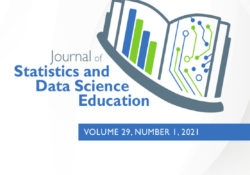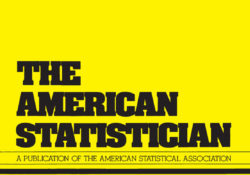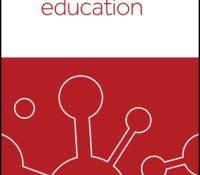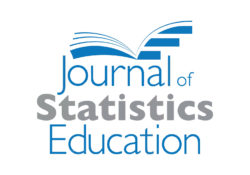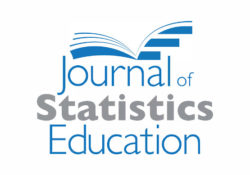tandfonline.com har udgivet en rapport under søgningen “Teacher Education Mathematics”: Abstract Formulae display:?Mathematical formulae have been encoded as MathML and are displayed in this HTML version using MathJax in order to improve their display. Uncheck the box to turn MathJax off. This feature requires Javascript. Click on a formula to zoom. Abstract We developed and tested strategies for using spatial representations to help students understand core probability concepts, including the multiplication rule for computing a joint probability from a marginal and conditional probability, interpreting an odds value as the ratio of two probabilities, and Bayesian inference. The general goal of these strategies is to promote active learning by introducing concepts in an intuitive spatial format and then encouraging students to try to discover the explicit equations associated with the spatial… Continue Reading →
Like this:
Like Loading...
tandfonline.com har udgivet en rapport under søgningen “Teacher Education Mathematics”: Link til kilde
Like this:
Like Loading...
tandfonline.com har udgivet en rapport under søgningen “Teacher Education Mathematics”: Link til kilde
Like this:
Like Loading...
tandfonline.com har udgivet en rapport under søgningen “Teacher Education Mathematics”: Abstract Formulae display:?Mathematical formulae have been encoded as MathML and are displayed in this HTML version using MathJax in order to improve their display. Uncheck the box to turn MathJax off. This feature requires Javascript. Click on a formula to zoom. Abstract Reflecting growing emphasis on data analysis and statistical thinking in the information age, mathematics curriculum standards in the U.S. have recently increased expectations for student learning in the domain of statistics and probability. More than 180 teachers in 36 public school districts in Florida applied for a two-week summer institute designed to increase teachers’ content and pedagogical content knowledge in statistics and probability. Individual teachers were assigned at random to a treatment or business-as-usual comparison group. The two-week… Continue Reading →
Like this:
Like Loading...
eric.ed.gov har udgivet: The purpose of these modules is to provide an introduction to the world of probability and statistics to accelerated mathematics students at the high school level. The modules also introduce students to real world math concepts and problems that property and casualty actuaries come across in their work. They are designed to be used by teachers and students of AP courses (primarily AB and BC Calculus) after the AP exam, but of course they can be used at any time. Statistical thinking is critical in today’s society. Data are everywhere and students will see and recognize misinterpretations all the time. “Probability & Statistics: Modular Learning Exercises” cover: (1) Basic Statistics Concepts; (2) The Normal Model; (3) Discrete Probability Distributions; and (4) Correlation and Regression. Link til kilde
Like this:
Like Loading...
eric.ed.gov har udgivet: Created by teachers for teachers, the Math Academy tools and activities included in this booklet were designed to create hands-on activities and a fun learning environment for the teaching of mathematics to the students. This booklet contains the themed program “Are You Game? Math Academy–Explorations in Probability,” which teachers can use to enhance their math instruction while staying true to the academic rigor required by the state standards framework. Included in this booklet are activities the author used for The Game Company Math Academy. This Math Academy is designed to help students understand probability through playing games. Teachers may choose to implement a grade-level or school-wide Math Academy, or they may prefer to implement these activities in their own classroom. Whichever format they use, teachers should keep… Continue Reading →
Like this:
Like Loading...
eric.ed.gov har udgivet: “The Power of Probability” is a new math program aligned with the National Council of Teachers of Mathematics (NCTM) and Common Core State Standards, which gives students opportunities to practice their skills and knowledge of the mathematics of probability. Developed by The Actuarial Foundation, the program’s lessons and worksheets motivate students through activities that use mathematics for real purposes. [A poster that accompanies this teaching guide can be viewed and/or retrieved at: http://www.actuarialfoundation.org/pdf/poster-conversions-rock.pdf.] Link til kilde
Like this:
Like Loading...
tandfonline.com har udgivet en rapport under søgningen “Teacher Education Mathematics”: Abstract Formulae display:?Mathematical formulae have been encoded as MathML and are displayed in this HTML version using MathJax in order to improve their display. Uncheck the box to turn MathJax off. This feature requires Javascript. Click on a formula to zoom. Abstract Simulation is an effective tool for analyzing probability models as well as for facilitating understanding of concepts in probability and statistics. Unfortunately, implementing a simulation from scratch often requires users to think about programming issues that are not relevant to the simulation itself. We have developed a Python package called Symbulate (https://github.com/dlsun/symbulate) which provides a user friendly framework for conducting simulations involving probability models. The syntax of Symbulate reflects the “language of probability” and makes it intuitive to… Continue Reading →
Like this:
Like Loading...
tandfonline.com har udgivet en rapport under søgningen “Teacher Education Mathematics”: ABSTRACT ABSTRACT As statisticians and scientists consider a world beyond p < 0.05, it is important to not lose sight of how we got to this point. Although significance testing and p-values are often presented as prescriptive procedures, they came about through a process of refinement and extension to other disciplines. Ronald A. Fisher and his contemporaries formalized these methods in the early twentieth century and Fisher’s 1925 Statistical Methods for Research Workers brought the techniques to experimentalists in a variety of disciplines. Understanding how these methods arose, spread, and were argued over since then illuminates how p < 0.05 came to be a standard for scientific inference, the advantage it offered at the time, and how it was interpreted. This historical perspective can… Continue Reading →
Like this:
Like Loading...
tandfonline.com har udgivet en rapport under søgningen “Teacher Education Mathematics”: Abstract Abstract Informally testing the fit of a probability distribution model is educationally a desirable precursor to formal methods for senior secondary school students. Limited research on how to teach such an informal approach, lack of statistically sound criteria to enable drawing of conclusions, as well as New Zealand assessment requirements led to this study. Focusing on the Poisson distribution, the criteria used by ten Grade 12 teachers for informally testing the fit of a probability distribution model was investigated using an online task-based interview procedure. It was found that criteria currently used by the teachers were unreliable as they could not correctly assess model fit, in particular, sample size was not taken into account. The teachers then used an… Continue Reading →
Like this:
Like Loading...
